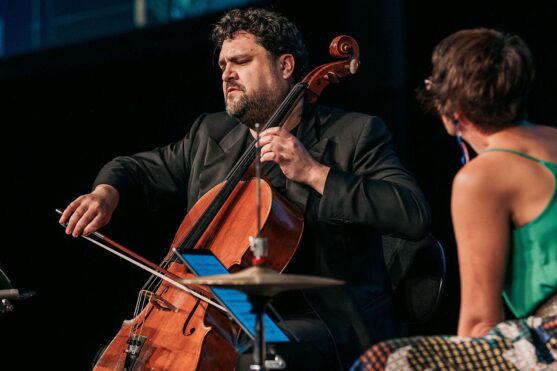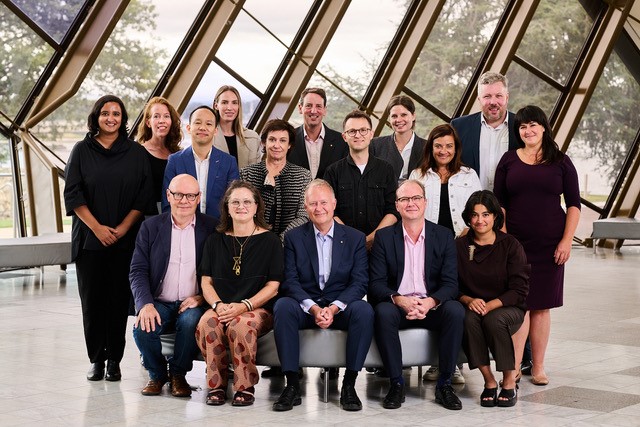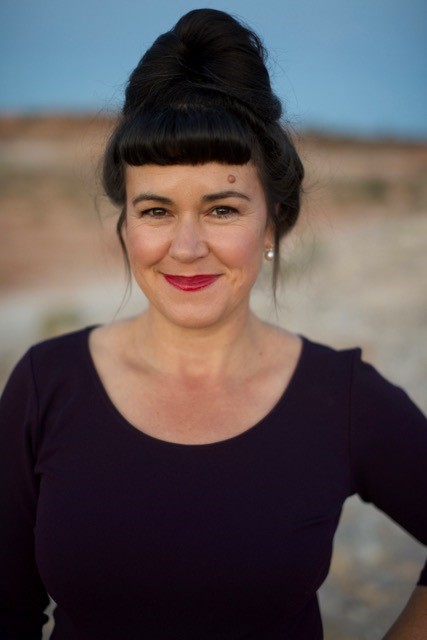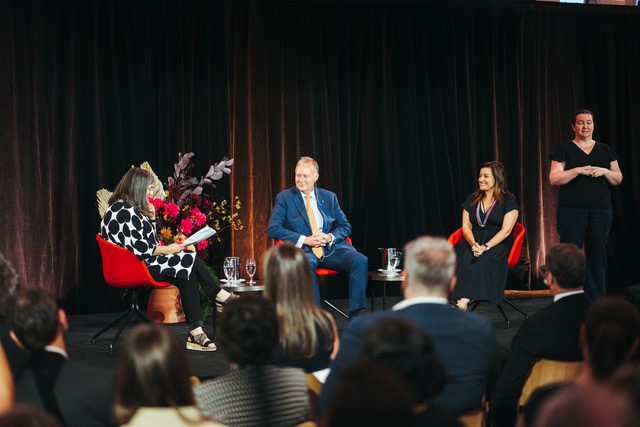A New Approach: How philanthropy and creativity are working together to turn Australia into a ‘cultural powerhouse’

Australia can become a powerhouse where arts and culture is a part of the day-to-day lives of Australians. A consortium of like-minded philanthropic bodies are working together to achieve exactly that. The organisation driving this effort is Australia’s leading arts and culture think tank, A New Approach (ANA).
This story was first published in the hardcopy edition of Inspiring Stories of Giving volume 1 in October 2023.
ANA is a not-for-profit organisation that grew from a program founded in 2018 by an initial three-year investment from The Myer Foundation, the Tim Fairfax Family Foundation and the Keir Foundation (there are now 11 philanthropic partners). Today ANA’s work is used in policy development processes for arts and culture across all levels of government around the country.

ANA was born when those three philanthropic organisations combined to help change the way governments understood the contemporary role that arts and culture play in Australia. “I was told, ‘We want to improve public policy settings for arts and culture through evidence – work out how to do that’,” says Kate Fielding, ANA’s CEO. “What really struck me about this initiative was that there was an appetite for new solutions, for jumping into the unknown and a willingness to back the outcome we’re playing for – and being brave in working out how to get there. For my perspective, that’s a hallmark of the philanthropists who have backed ANA.”
ANA’s purpose, Kate says, is to “foster evidence-led conversations about public policy settings and achieve a better environment for arts, culture and creativity in Australia”.

That conversation became louder in January 2023 when the Federal Government released a new national cultural policy, a five-year plan to renew and revive Australia’s arts, entertainment and cultural sector. “The policy document includes our vision for Australia, which is for Australia to become a cultural powerhouse by 2035,” says Kate. “We’re delighted our research is also featured in the document.”
Becoming a cultural powerhouse was the theme of ANA’s submission to the National Cultural Policy consultation in 2022. It posited that Australia had not yet reached that status but by 2035 should be “a cultural powerhouse whose compelling creativity is locally loved, nationally valued and globally influential”. By that date Australia could be “home to a $200 billion industry that produces compelling experiences and employs one million people”.
Kate says that if this is achieved, Australia will become a great place for audiences and creators. “We already have high rates of cultural participation and attendance in Australia and the aim is for that to become a celebrated part of what it means to be Australian, along with securing the policy and investment settings that unlock the power of arts and culture as social, cultural and economic contributors.”
The impact ANA has achieved through its work includes greater clarity on the role of arts and culture. “Our work has been changing the understanding of how people think and feel about arts and culture and what everyday Australians see as the role of arts and culture in their day-to-day lives,” says Kate. “We’ve used those insights, as well as up-to-date international and Australian evidence of the benefits of cultural participation, to help inform government policy on all three levels of government.”
ANA has shown through its independent research that many Australians already participate in and benefit from the arts and culture. A report it produced found that Australians are significant contributors to “financial inflows” to arts, culture and creativity, with more than $45.6 billion in annual household expenditure being spent in the entertainment and recreation industry.

Leonard Vary, CEO of The Myer Foundation, says the creation of the organisation had, at its heart, a desire on the part of philanthropy to create a body that would independently provide evidence to support the case for the importance of funding of arts and culture.
“In Australia, there are many voices around issues connected to the arts,” he says. “Most of them have vested interests and, until the work of A New Approach, there was a lack of objective data as to the state of the arts, the way in which the arts and culture in this country are seen and valued. Who pays for them? At what level? Who are the consumers? What does ‘middle Australia’ think about arts and culture? That was missing, and when one takes the view that one wants to champion arts and culture in that noisy ecosystem, facts are enormously helpful.”
Leonard Vary says from The Myer Foundation’s perspective, ANA is delivering on all of the foundation’s key objectives. “We understand that when one creates an organisation from scratch, and that is the case with A New Approach, it takes time,” he says. “Remember, it was an idea, and then the idea was brought to life by way of the creation of a board, and the organisation was initially incubated in the Australian Academy of the Humanities, and it is now independent, having built its own reputation and developed its critical infrastructure.’
Kate says: “ANA’s journey, from idea into action and then impact truly embodies the power of creativity and philanthropy working together.”
Kate Fielding, CEO of A New Approach, will be presenting at the next Arts Funders Network meeting on Thursday 30 May. Click here to learn more and register.